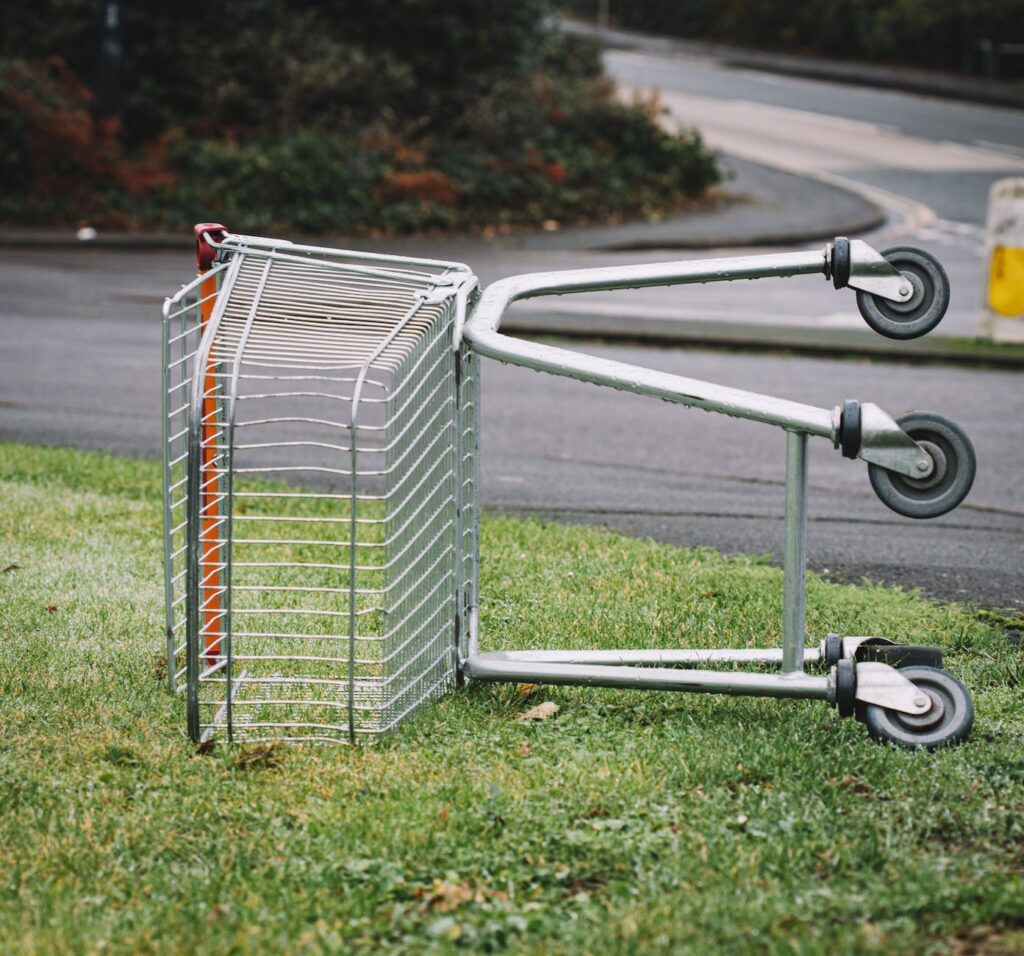Understanding Abandoned Carts
In the realm of e-commerce, understanding the phenomenon of abandoned carts is paramount for store owners aiming to reclaim lost revenue. An abandoned cart occurs when a potential customer adds items to their online shopping cart but exits without completing the purchase. Let’s delve into how this affects revenue and the underlying causes.
The Impact of Cart Abandonment on Revenue
Cart abandonment is a significant challenge for e-commerce businesses, as it directly impacts potential revenue. When we look at the numbers, the picture becomes clear:
| Industry | Abandonment Rate |
|---|---|
| Fashion | 68.3% |
| Tech | 70.1% |
| Travel | 81.7% |
These rates illustrate the amount of revenue left on the table. While these figures are industry averages, individual stores might experience higher or lower rates. Recovering even a fraction of these abandoned carts can lead to a substantial increase in revenue. For insights on optimizing your store’s performance, explore our comparison between WooCommerce vs Shopify and consider implementing the best Shopify SEO strategies.
Identifying the Reasons Behind Cart Abandonment
Several factors contribute to why shoppers abandon their carts. By identifying these reasons, we can tailor our recovery strategies more effectively. Common causes include:
- High extra costs (shipping, tax, fees)
- Requirement to create an account
- Complex checkout process
- Lack of trust (payment security concerns)
- Unsatisfactory return policy
- Insufficient payment methods
- Website errors or crashes
- Slow delivery
Understanding these factors is a crucial step in mitigating cart abandonment. For instance, simplifying the checkout process can be addressed by customizing Shopify themes or optimizing WooCommerce checkout. Similarly, providing a variety of WooCommerce payment gateways can cater to different customer preferences.
As we progress further into strategies for tackling cart abandonment, remembering the significance of these foundational insights will guide our efforts in crafting a robust Shopify abandoned cart recovery plan.
Shopify Abandoned Cart Recovery Essentials
In our efforts to maximize revenue and reduce lost sales opportunities, understanding the essentials of abandoned cart recovery is vital. We will delve into what Shopify abandoned cart recovery entails and the significance of timely engagement in recapturing potential customers.
What is Shopify Abandoned Cart Recovery?
Shopify abandoned cart recovery is a systematic approach to re-engage customers who have left items in their shopping carts without completing the purchase. This feature is an integral part of the Shopify platform, designed to help store owners recapture potential sales. The process involves identifying abandoned carts and then executing strategies to encourage customers to return and finalize their transactions.
At its core, abandoned cart recovery hinges on the ability to track and analyze customer behavior. Shopify provides built-in tools that automatically track cart abandonment and facilitate follow-up actions, such as sending reminder emails or offering discounts to incentivize completion of the purchase.
The Importance of Timely Engagement
Engaging with customers promptly after they’ve abandoned a cart is crucial. Studies show that the likelihood of recovering a sale decreases as time passes, so it’s imperative to act swiftly. Timely engagement ensures that your store remains at the forefront of customers’ minds and increases the chances of converting abandoned carts into successful sales.
| Time After Abandonment | Recovery Rate |
|---|---|
| 1 hour | 20% |
| 24 hours | 12% |
| 48 hours | 5% |
To achieve optimal results, we recommend setting up automated processes that trigger recovery actions within an hour of cart abandonment. This can include sending out a personalized recovery email or triggering a push notification to the customer’s device.
Timely engagement not only helps recover sales but also provides an opportunity to gather insights into why customers are abandoning their carts. This data is invaluable for improving the shopping experience and can inform strategies such as optimizing checkout experiences and customizing Shopify themes to better suit customer preferences.
By prioritizing abandoned cart recovery and timely engagement, we position our eCommerce stores to reclaim lost revenue and enhance the overall shopping experience for our customers. For more insights into Shopify’s features and how they compare to other platforms like WooCommerce, we encourage you to read our comparison on WooCommerce vs Shopify.
Strategies for Abandoned Cart Recovery
When we talk about boosting revenue for an online store, one of the most crucial aspects to consider is the recovery of abandoned carts. Let’s delve into some strategic approaches to re-engage customers who have left items in their carts without completing the purchase.
Crafting Effective Recovery Emails
Recovery emails are pivotal in nudging customers to revisit their abandoned carts. To craft an email that converts, we focus on several elements:
- Subject Line: The first point of contact with our customers. We ensure it’s attention-grabbing and conveys urgency or offers a benefit.
- Personalization: We address customers by name and include details of the abandoned items, making the email feel tailored to them.
- Clear Call-to-Action: Our emails have a clear and prominent call-to-action that takes customers directly to their cart.
- Visual Appeal: We incorporate high-quality images of the abandoned products to remind customers what they’re missing out on.
Here’s an example of how we structure our recovery email content:
| Element | Detail |
|---|---|
| Subject Line | “You Forgot Something Special in Your Cart!” |
| Personalization | “Hi [Name], your [Product Name] is waiting for you!” |
| Call-to-Action | “Complete Your Purchase Now” button |
| Visuals | Product images from the cart |
For more information on how to optimize your email strategy, check out our article on shopify email marketing strategies.
Leveraging Push Notifications
Push notifications serve as a quick and direct way to remind customers about their carts. We use concise, action-oriented messaging that encourages immediate response. Timing is crucial, and we send these notifications when the customer is most likely to be online based on their browsing history.
To effectively leverage push notifications, we:
- Personalize the Message: Including the customer’s name and cart items increases relevance.
- Offer a Discount: A limited-time offer can incentivize customers to act fast.
- Keep it Short: Conciseness ensures the message is read and acted upon.
Utilizing Remarketing Campaigns
Remarketing campaigns are a powerful tool to target customers who have shown interest in our products but haven’t completed a purchase. We display ads across various platforms reminding them of what they’ve left behind. These platforms include social media and other websites that our customers frequently visit.
To maximize the effectiveness of our remarketing campaigns, we:
- Segment Our Audience: We create targeted lists based on customer behavior and cart value.
- Use Dynamic Ads: These ads show the exact items the customer abandoned, increasing the likelihood of recovery.
- Employ A/B Testing: Testing different ad designs and copy helps us understand what resonates best with our audience.
By implementing these strategies, we enhance our chances of recovering abandoned carts and reclaiming lost revenue. Each strategy can be tailored to fit the unique needs of our Shopify store, and by combining them, we create a robust recovery system. For insights into the foundational aspects of Shopify, consider exploring articles such as shopify for small businesses or best shopify themes for conversion.
Best Practices for Shopify Abandoned Cart Recovery
In the competitive landscape of e-commerce, where every sale counts, mastering the art of abandoned cart recovery on Shopify can significantly enhance revenue. Let’s explore some of the best practices we can implement to reclaim potentially lost sales.
Personalization Techniques
Personalization is at the heart of effective abandoned cart recovery. By tailoring our communication to each individual customer, we increase the likelihood of reclaiming lost sales. Here are some personalization techniques we can use:
- Use Customer’s Name: Addressing customers by their name in emails or messages makes the outreach feel more personal.
- Recommend Related Products: Suggest items that complement what was in their abandoned cart based on their browsing behavior.
- Show Cart Contents: Remind customers of what they left behind by including images and details of the products in the recovery messages.
Incorporating these personalization techniques helps create a connection with the customer, making it more likely they’ll complete their purchase. For insights into how personalization can boost conversions, we can look at shopify marketing tools.
Offering Incentives
Incentives can be a powerful tool to nudge customers over the line. Consider the following:
- Discounts: Offering a time-sensitive discount on the items in the abandoned cart can encourage customers to act fast.
- Free Shipping: Waiving shipping fees is often enough to convince customers to complete their purchase.
- Exclusive Offers: Providing an offer that’s not available to the general public can make the customer feel special.
Remember to clear any roadblocks that might prevent customers from taking advantage of these offers. For comparison, see how incentives work differently on platforms by exploring woocommerce vs shopify.
Optimizing Checkout Experience
A smooth checkout process is key to preventing cart abandonment in the first place. Here’s how we can optimize the checkout experience:
- Simplify Forms: Keep required fields to a minimum.
- Multiple Payment Options: Offer a variety of payment methods, including digital wallets and woocommerce payment gateways.
- Guest Checkout: Allow customers to purchase without creating an account.
- Clear Navigation: Ensure that the steps to purchase are easy to follow and that customers can edit their cart without hassle.
A/B testing different checkout scenarios can provide valuable data on what works best for our customers. For more information on optimizing checkout experiences, consider woocommerce checkout optimization.
By implementing these best practices for Shopify abandoned cart recovery, we can not only boost our sales but also build stronger relationships with our customers. Personalization, incentives, and a seamless checkout process are all critical components of a holistic recovery strategy. For further details on enhancing the Shopify experience, review our guide on customizing shopify themes.
Tools and Features for Recovery on Shopify
When it comes to boosting revenue, Shopify store owners must address the common issue of abandoned carts. Fortunately, Shopify offers a suite of tools designed to aid in the recovery of these potentially lost sales. Additionally, integrating third-party apps can further enhance the effectiveness of your recovery efforts. Let’s explore both these avenues.
Shopify’s Built-in Recovery Tools
Shopify provides its merchants with built-in tools specifically aimed at abandoned cart recovery. These features are designed to automate the process and make it easier for store owners to reconnect with customers who have left items in their carts.
One of the key tools is the automatic abandoned checkout recovery emails. Shopify enables merchants to send a pre-set or customized email to shoppers who have abandoned their carts. These emails can be scheduled at specific intervals to remind customers of their incomplete purchase, and they can include direct links to the abandoned checkout to facilitate a seamless return to the purchasing process.
| Feature | Description |
|---|---|
| Abandoned Checkout Email | Sends automated emails to customers who have abandoned their carts. |
| Customization Options | Allows personalization of recovery emails with templates and dynamic content. |
| Timing Control | Lets you set specific times for when the recovery emails should be dispatched. |
For more on customizing these communications, you can read our guide on customizing shopify themes. Additionally, utilizing shopify marketing tools can provide a more comprehensive approach to re-engage customers.
Integrating Third-Party Apps
Apart from Shopify’s native features, numerous third-party apps available in the Shopify App Store can amplify your cart recovery strategy. These apps often offer more advanced functionalities such as SMS notifications, push notifications, and AI-driven product recommendations to entice customers back to their carts.
When selecting a third-party app, it’s important to consider the specific needs of your store and your customers. The right app should integrate seamlessly with your store’s design and provide a user-friendly experience.
Here are some functionalities you might find in third-party apps for abandoned cart recovery:
| App Functionality | Benefit |
|---|---|
| SMS Notifications | Sends text messages to customers for a more direct form of engagement. |
| Push Notifications | Provides timely prompts to customers even when they are not actively browsing your store. |
| AI Product Recommendations | Offers personalized product suggestions based on the customer’s shopping behavior. |
To explore the best third-party apps for your store, you might want to consider the nature of your products and audience. For specific insights into app integration, refer to our shopify dropshipping guide or shopify plus benefits for high-volume merchants.
Implementing the right tools and features for abandoned cart recovery on Shopify is a vital step in reclaiming lost revenue. Whether you choose to utilize Shopify’s built-in capabilities or enhance your approach with third-party apps, the goal is to create a strategy that resonates with your customers and encourages them to complete their purchases. Always keep track of your strategies’ performance through shopify analytics and reporting to continuously refine and improve your recovery efforts.
Tracking and Analyzing Recovery Efforts
To maximize the efficiency of our abandoned cart recovery strategies, we must track and analyze our efforts. This data-driven approach will help us understand what works, what doesn’t, and where we can improve.
Setting Up Analytics for Cart Recovery
Our initial step is to set up analytics specifically for tracking abandoned cart recovery. Shopify provides us with built-in analytics tools that can be utilized to monitor abandoned checkouts and recovery attempts. To get a comprehensive view, we also integrate these with advanced analytics platforms that can segment data and reveal patterns in customer behavior.
Here’s how to set up your analytics for cart recovery:
- Enable Shopify’s built-in cart recovery analytics.
- Integrate with an advanced analytics service, if necessary.
- Set up specific goals and conversion tracking related to cart recovery.
- Define the metrics that we’ll use to measure success, such as recovery rate, open rate of recovery emails, click-through rate, and ultimately, the conversion rate.
By closely monitoring these metrics, we can gain valuable insights into the effectiveness of our abandoned cart communications. For a comparison of analytics tools, consider reading our article on shopify vs woocommerce for seo, which includes a discussion on the analytics capabilities of each platform.
Measuring the Success of Recovery Strategies
After setting up the proper analytics, we must determine the success of our recovery strategies. This involves analyzing the data collected and comparing it against our defined KPIs (Key Performance Indicators). A table format can be helpful to display this data succinctly:
| Metric | Pre-Recovery Effort | Post-Recovery Effort | Improvement |
|---|---|---|---|
| Recovery Rate | 5% | 12% | +7% |
| Email Open Rate | 15% | 35% | +20% |
| Email Click-Through Rate | 10% | 25% | +15% |
| Conversion Rate | 3% | 9% | +6% |
By reviewing these metrics regularly, we can assess the impact of our abandoned cart recovery emails, push notifications, and remarketing campaigns. We must also consider the role of personalization and incentives, as discussed in our section on best practices for Shopify abandoned cart recovery.
It’s important to remember that recovery strategies can always be refined. Regular A/B testing of different messages, offers, and timings will help us iterate and enhance our approach. Furthermore, leveraging insights from shopify analytics and reporting will empower us to make data-driven decisions that align with our overall ecommerce objectives.
In conclusion, tracking and analyzing the data is a continuous process that informs us about the effectiveness of our cart recovery tactics. By understanding the nuances of our strategies through vigilant analytics, we can reclaim lost revenue and enhance the shopping experience for our customers.


